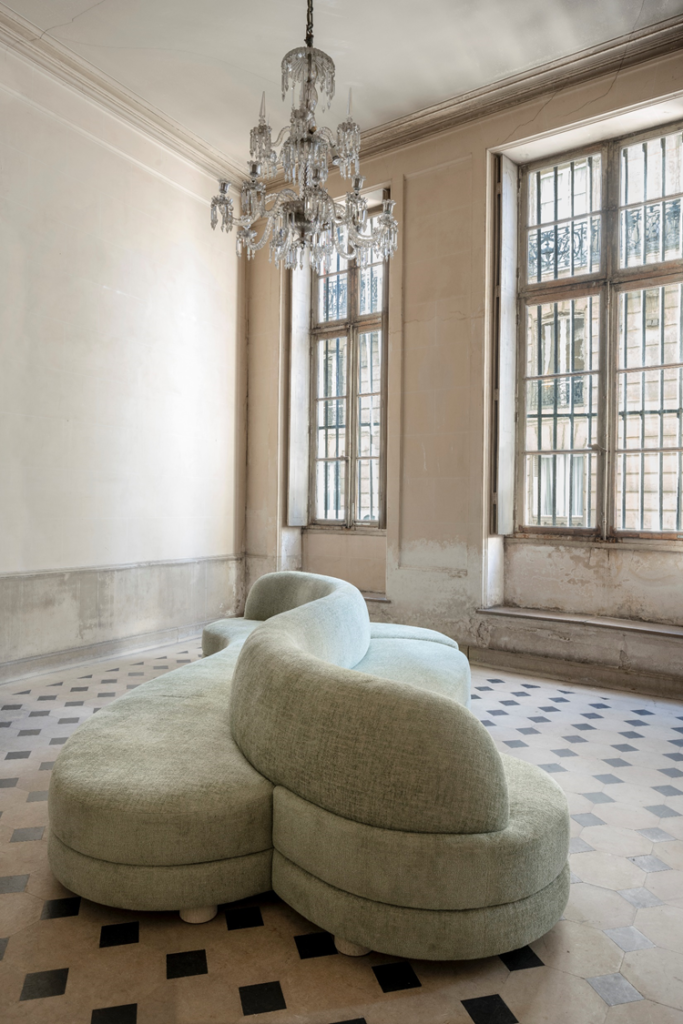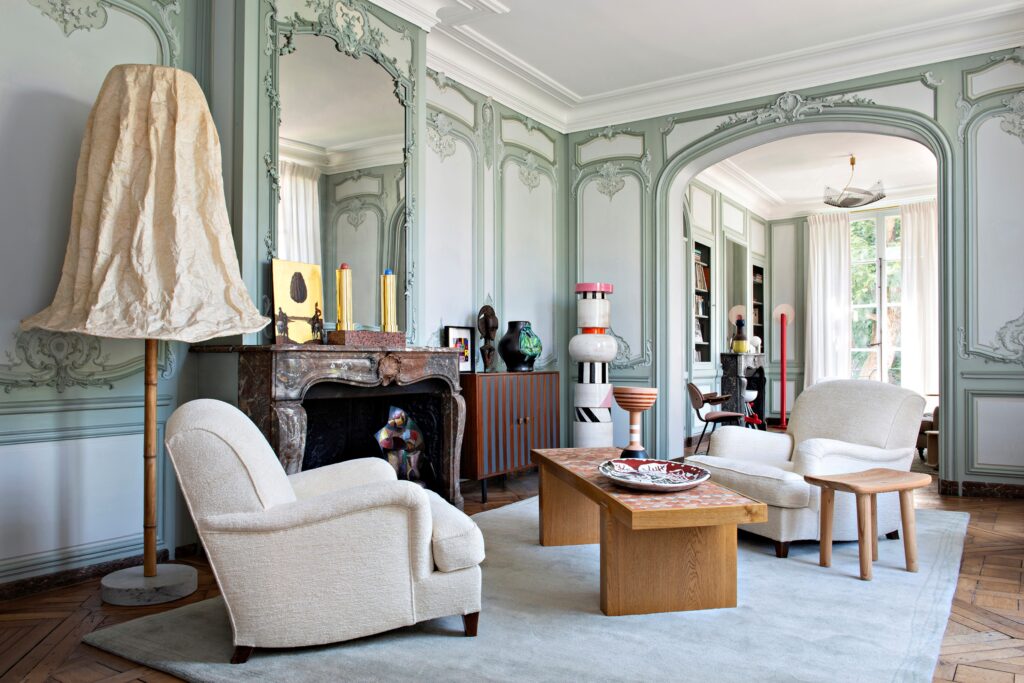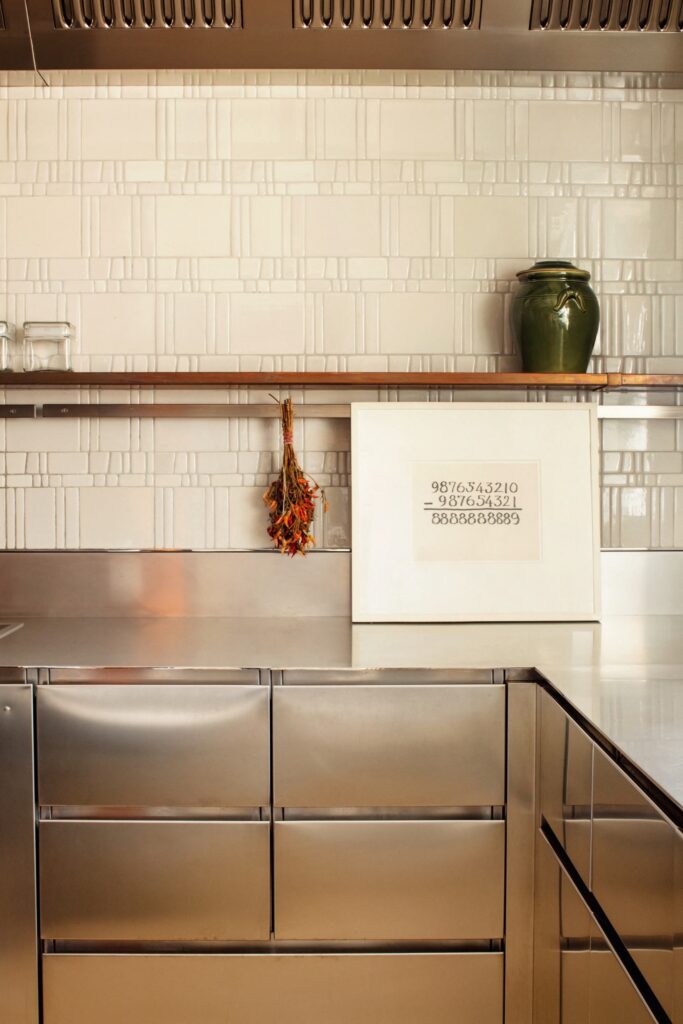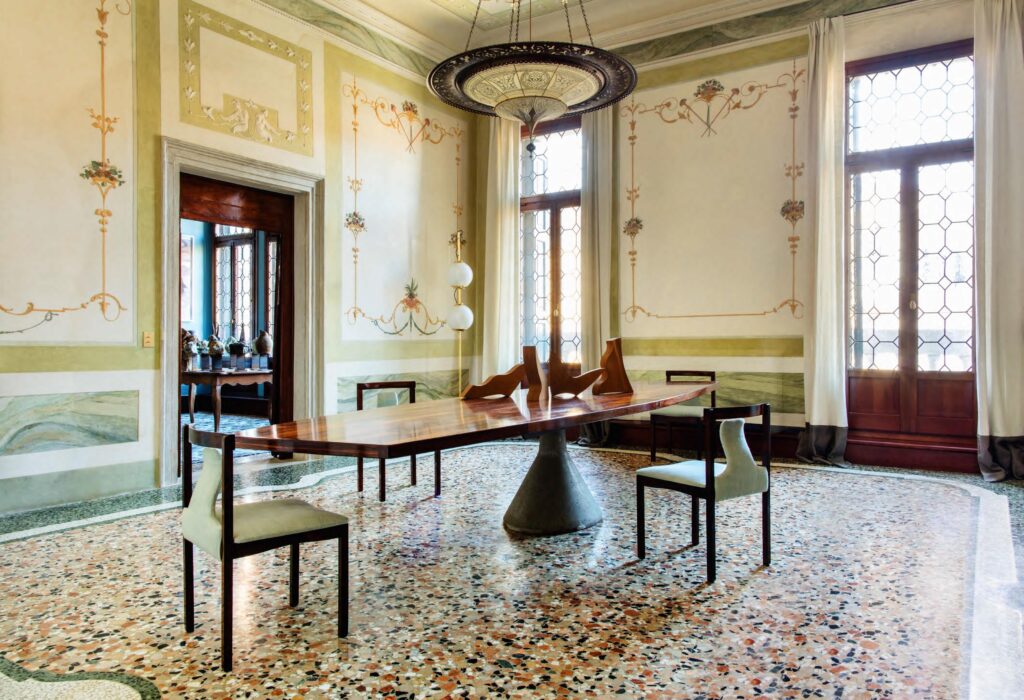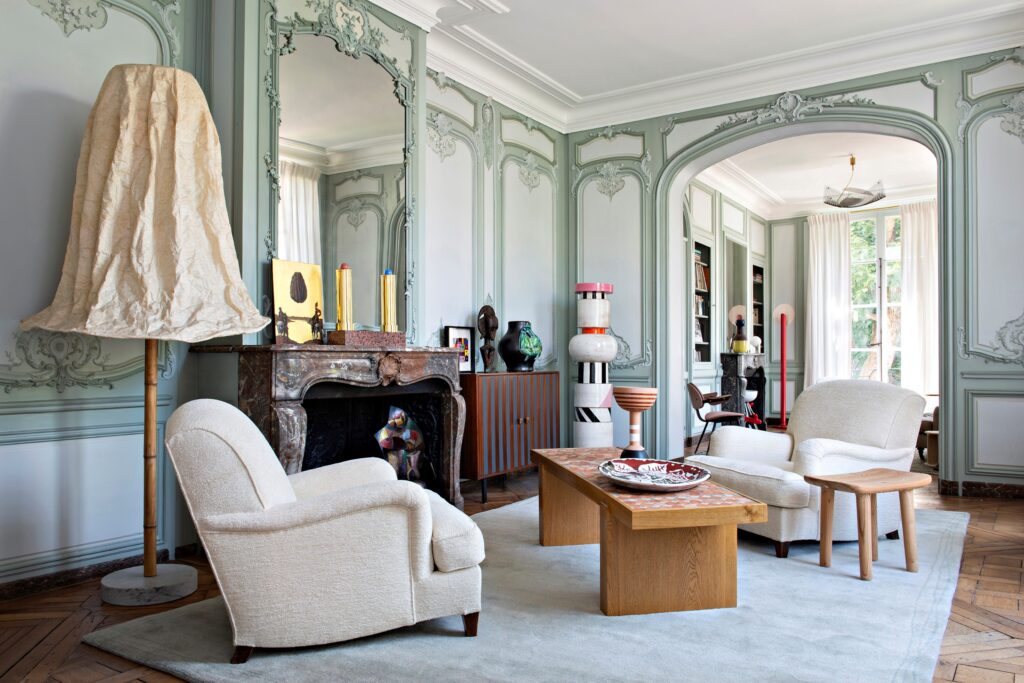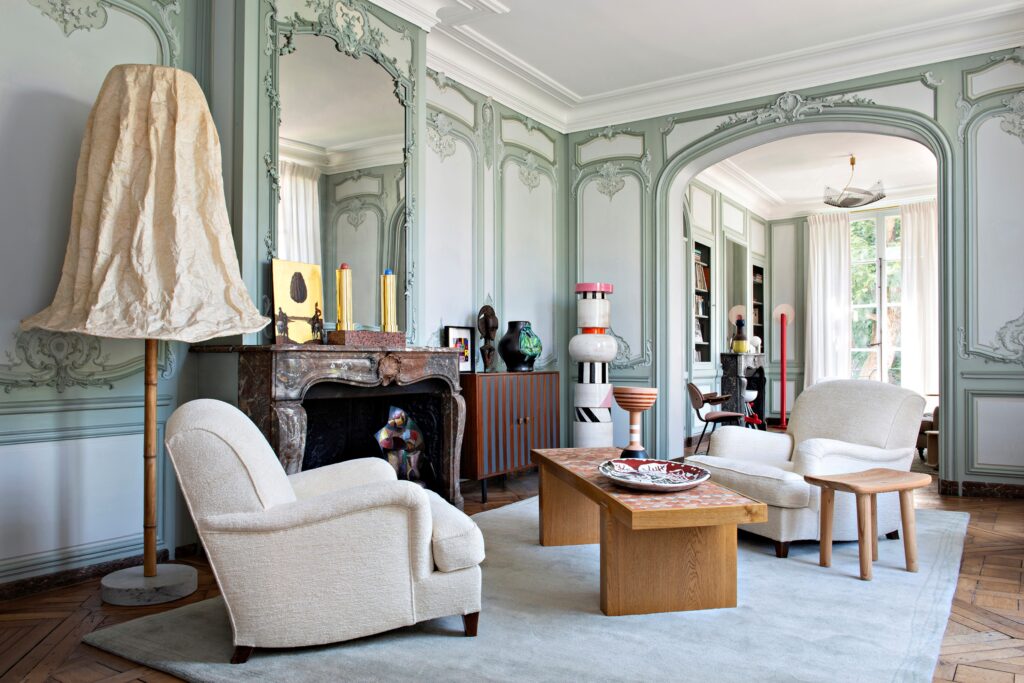
“I have known Charles for a long time, and we share the same taste for the great Italian designers and architects of the second half of the 20th century: Mollino the maverick; Ettore Sottsass the disruptor; Carlo Scarpa, whose radical elegance has deeply influenced Charles’ work. I like the sense of place and proportions of his interiors, always respectful of the identity of their owners. But even more than his work, I like Charles as a person—his energy, his generosity, and his enthusiastic desire to share his passions with his friends and clients.”
—Marie Kalt, Editor in Chief, AD France
To set the tone for my conversation with French architect Charles Zana during last week’s Interior Design: The Legends, I played Charles Aznavour’s La Bohème. A classic of 1960s French chanson, this moodily romantic, deeply passionate song perfectly encapsulates the spirit of Zana’s work. Unlike the artist described in Aznavour’s iconic lyrics, however, who mourns the loss of his happy youth on the steps of bohemian Montmartre, Zana’s zest for life is fully intact. At 60, he told us, he has many dreams he intends to achieve. While nostalgia and sentimental longing pervade his interiors, Zana brims with energetic creativity for the projects yet to come.
Zana’s celebrated taste is rooted in his scholarly knowledge and immense interest in the history of art and architecture. As an architect, interior designer, furniture designer, and collector, his charisma inspires devotion in others. He has been a trailblazer when it comes to educating his clients and persuading them to elevate their daily lives by bringing art and good design into their homes.
“Decorative” has no place in his vocabulary. Instead he curates pure, sophisticated spaces that unite architecture and furnishings into a singular expression. Whether mid-century French and Italian, radical design of the 1980s, or cutting-edge contemporary, the objects he selects are bold, progressive, architectural, and devoid of extraneous ornamentation. But don’t expect to see furniture permanently installed in Zana’s homes, because according to him furniture and objects should never remain static. Consequently, his interiors do not contain built-ins with the exception of libraries.
The role of objects in Zana’s interiors is central, and he always chooses objects, we learned, before he fully formulates his interior schemes. In fact, it is the objects that are most responsible for Zana’s distinctive language, because his choices are intended to express locality and geographical identity. As a result, each of his interiors is entirely unique. He is a master of the art of the mix.
“Objects of high quality,” he told us, “can live together simply because they are great,” even when they are not unified by style. You will never find a single period dominating Zana’s interiors, because Zana isn’t interested in the “total look.” Even 30 years ago when he launched his independent practice at the height of the trend for unified styling, Zana’s interiors were always at once intellectual and exquisitely individualistic.
Zana shops like a hungry hunter, prowling the world’s art fairs, galleries, auction houses, and even small and unknown ateliers in pursuit of the most fitting, authentic objects for his clients. I once spotted a great piece in a Milanese gallery and was told that it wasn’t available because it was “saved for Charles Zana.” He shared with us the words of one of his heroes, the late-great pioneering Parisian gallerist Pierre Staudenmeyer, who told him that design collectors are like “drug addicts.” Zana continues to collect Staudenmeyer’s editions whenever they appear in the market.
Zana knows the best dealers, and they know him. Among his favorite galleries are Friedman Benda, Carpenters Workshop Gallery, Galerie Downtown, Jousse Entreprise, and Galerie Jacques Lacoste—all specialized in cutting-edge design and operating at the intersectional of academic scholarship and commercial enterprise. But he also loves collaborating with artists in the creation of site-specific installations. “The freedom he gives to artists is unique,” art advisor Ivan Mietton has told me, adding, “the way he mixes art and design makes his signature style so special.”
When it comes to living in Paris, Zana has strong preferences. He favors the vibrant lifestyle of the Left Bank, starting his day at the famed coffeehouse Café de Flore before heading to his office in the gallery district of Rue de Seine. He prefers the 17th- and 18th-century Neoclassical Parisian houses of Le Marais and the 6th arrondissement over the heavily decorated 19th-century Beaux-Arts Haussmann apartments. His 18th-century home on Rue de Grenelle, filled with his design collection, is the ultimate representation of his artistic vision and his penchant for evocative patinas.
Zana is a member of a small cadre of collectors of and experts in the work of Italian architect Ettore Sottsass (1917-2007), who has been credited with introducing spirituality into design theory and for showing the world how to think about design beyond the modernist canon. Sottsass is Zana’s spirit guide. When speaking about his Sottsass, he became emotional and somewhat poetic as he underscored Sottsass’ ongoing influence on design aesthetics to this day. Collecting his work, Zana explained, allows him to spend everyday amid Sottsass’ signature “magic.”
For the 2017 Venice Biennale, which coincided with the centenary of Sottsass’ birth, Zana curated his dream exhibition, DIALOGO, which juxtaposed Sottsass with another 20th-century Italian master, architect Carlo Scarpa. In Venice in 1957, Scarpa famously designed a showroom for Olivetti that presented the company’s typewriters as works of art; it was a temple of design. Ten years later, Sottsass designed his iconic, tomato-red Valentine typewriter for Olivetti; another landmark moment in design history. Zana honored this important connection between Scarpa and Sottsass by installing dozens of ceramics created by Sottsass between 1957 and 1970 within the historical Olivetti space designed by Scarpa.
These days, Zana has been pursuing another dream, his own line of furniture. Following years of creating bespoke pieces for clients, he decided he was to develop his own brand. All of his furniture, he told us, is designed for comfort—unlike historical masterpieces, which require a lot of care and are not always easy to live with. The references are rich and historical, and the craftsmanship is strictly French. “It is a collection in progress,” he said, with new pieces added periodically.
Beyond his immense expertise, sophistication, and success, there is Charles Zana the man. His warmth, generosity, modesty, and approachability attract praise from across his field. “I have always liked to collaborate with Charles,” renowned architecture and fashion photographer François Halard told me. “His decor reflects his friendly personality. He creates something cheerful, mixing art and design in a very contemporary way.” I couldn’t agree more.
This article was published today in Forum Magazing, by Design Miami/. All images courtesy Charles Zana.

